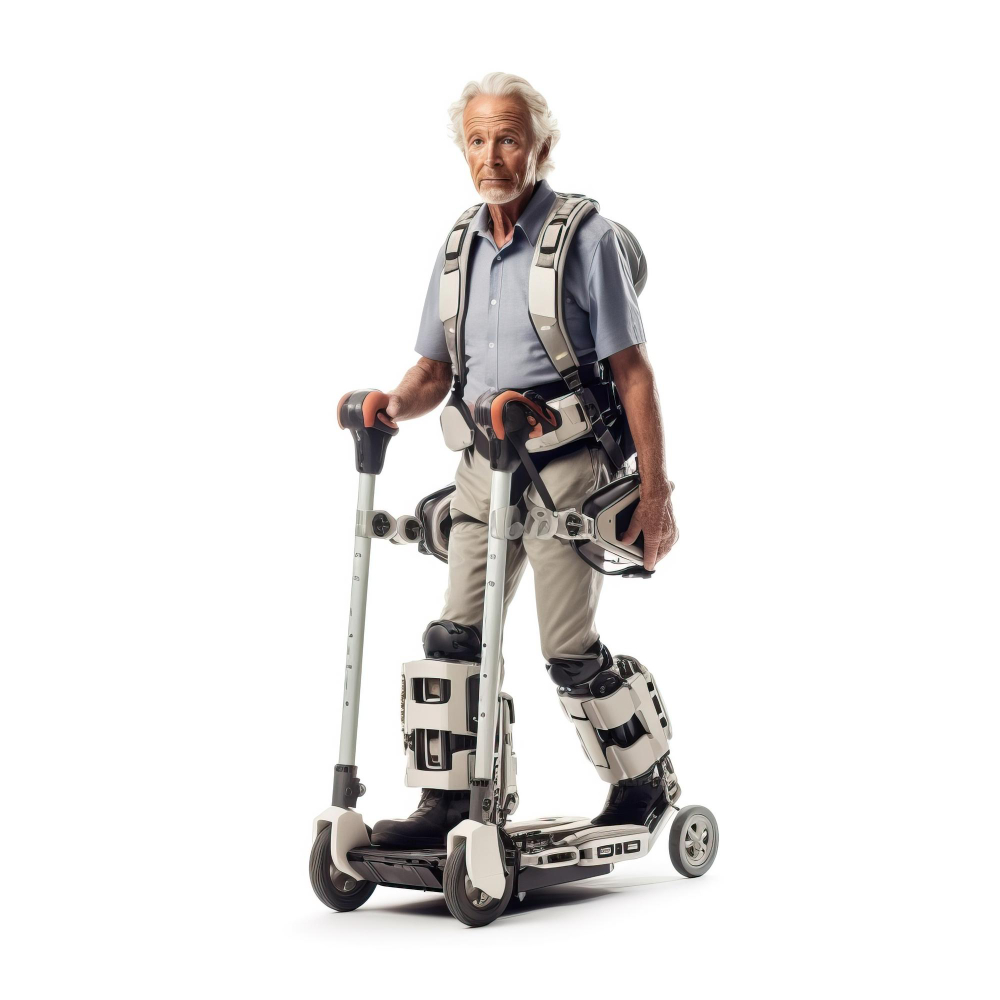Adjustable Reciprocal Walker

An adjustable reciprocal walker is a specialized mobility aid designed to assist individuals who have difficulty walking due to injury, illness, or developmental conditions. Unlike traditional walkers, which require lifting and placing with each step, a reciprocal walker allows each side of the walker to move alternately, mimicking a natural walking pattern. This design promotes a smoother and more efficient gait, improving stability and confidence for users. Adjustable features ensure the walker can be tailored to fit individual needs and preferences, making it suitable for a wide range of users.
Benefits
Improved Gait Pattern: The reciprocal motion of the walker encourages a more natural walking pattern, helping users develop better coordination and rhythm in their steps.
Enhanced Stability: The design provides additional support and balance, reducing the risk of falls and enhancing user safety during ambulation.
Adjustability: Height and width adjustments allow for a customized fit, ensuring optimal comfort and support for users of different sizes and mobility levels.
Increased Independence: By facilitating a more natural and stable walking pattern, adjustable reciprocal walkers empower users to move more independently and confidently.
Features
Reciprocal Motion Mechanism: Allows each side of the walker to move alternately, supporting a natural gait pattern and reducing the effort required to lift and move the walker.
Height Adjustability: The walker’s height can be easily adjusted to suit the user’s stature, ensuring proper ergonomic alignment and reducing strain on the shoulders and arms.
Width Adjustability: Some models offer adjustable width settings to accommodate users of different body sizes and provide adequate support and stability.
Lightweight and Durable Construction: Made from materials like aluminum or steel, the walker is lightweight for easy maneuverability while also being durable to withstand regular use.
Ergonomic Handgrips: Padded and contoured handgrips enhance comfort and reduce fatigue during use, supporting prolonged walking and activity.
Foldable Design: Many adjustable reciprocal walkers are designed to be foldable for easy storage and transport, making them convenient for use at home or on the go.
Applications
Rehabilitation: Ideal for individuals recovering from surgeries, injuries, or neurological conditions, the reciprocal walker aids in regaining strength, balance, and coordination.
Elderly Care: Provides essential support for older adults who may have reduced strength, balance issues, or mobility challenges, helping them maintain an active lifestyle.
Chronic Conditions: Beneficial for individuals with chronic conditions such as arthritis, multiple sclerosis, or Parkinson’s disease, offering a stable and supportive walking aid.
Pediatric Use: Adjustable reciprocal walkers can be tailored for children with mobility impairments, supporting their growth and development while improving their walking ability.
How to Use
Adjust to Fit: Ensure the walker’s height and width are adjusted to suit the user’s body size and comfort. The handgrips should be at wrist level when the user stands upright.
Reciprocal Movement: To walk, move one side of the walker forward while the opposite side remains stationary, then shift your weight and move the other side forward. This alternating movement mimics a natural walking pattern.
Maintain Posture: Keep an upright posture with your back straight and shoulders relaxed. Look ahead rather than down at your feet to maintain balance and prevent falls.
Take Small Steps: Start with small, controlled steps, ensuring each movement is steady and balanced. Gradually increase stride length as confidence and stability improve.
Practice Regularly: Consistent practice helps improve coordination, strength, and comfort using the reciprocal walker. Incorporate it into daily routines to enhance mobility and independence.
Safety Tips
Clear Pathways: Ensure walking areas are free of obstacles, clutter, and tripping hazards to reduce the risk of falls.
Use on Even Surfaces: For optimal stability, use the walker on flat, even surfaces. Exercise caution on uneven terrain, slopes, or stairs.
Regular Maintenance: Regularly check the walker for signs of wear, damage, or loose parts. Ensure all adjustments are secure before use.
Seek Professional Guidance: Consult with a physical therapist or healthcare professional to ensure proper use and adjustment of the walker, and to receive personalized recommendations based on individual needs.
An adjustable reciprocal walker is a valuable mobility aid that supports a natural walking pattern, enhances stability, and promotes independence for individuals with various mobility challenges. By offering customizable features and ergonomic design, it serves as an effective tool for rehabilitation, elderly care, and daily mobility assistance.


